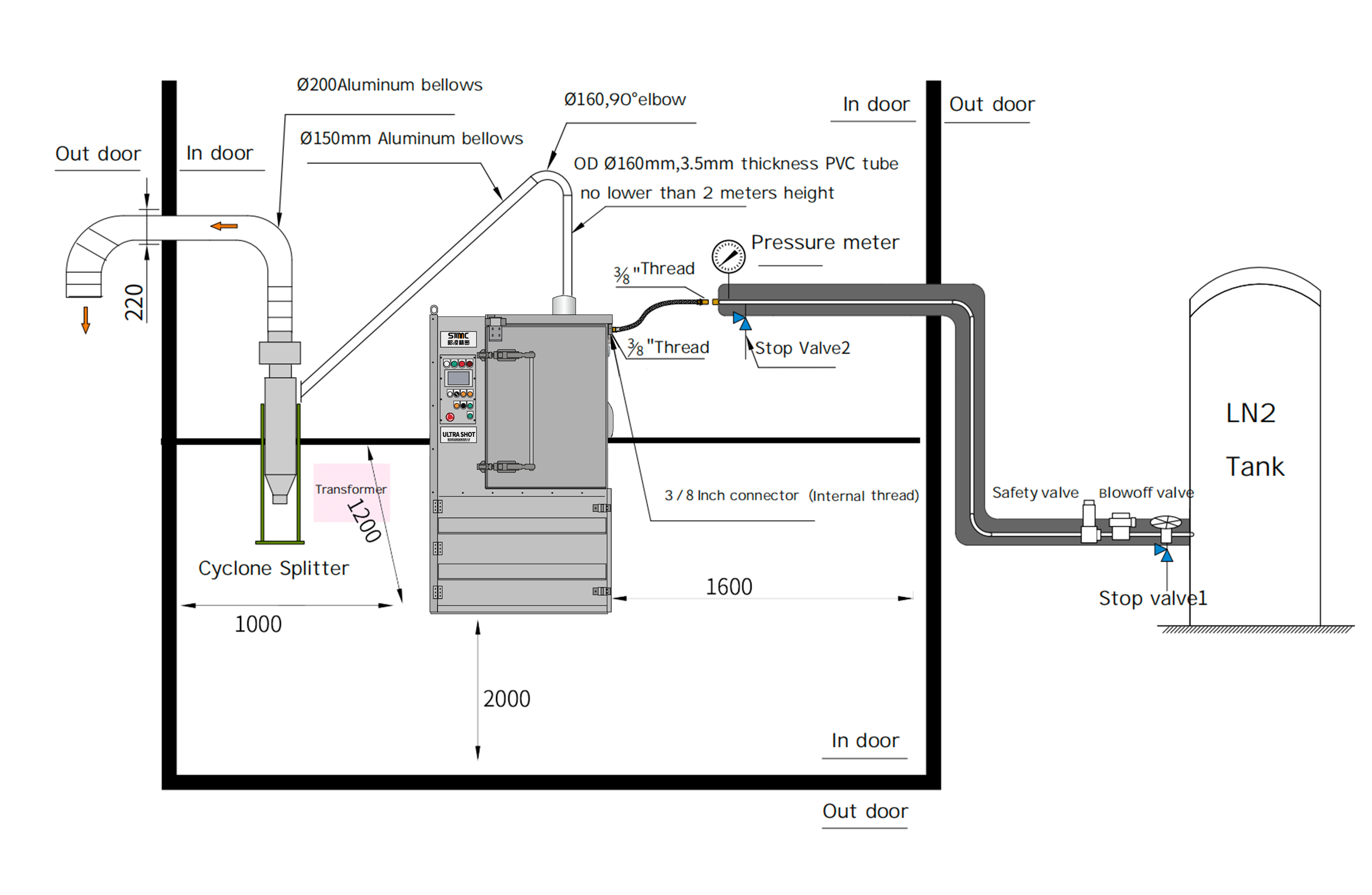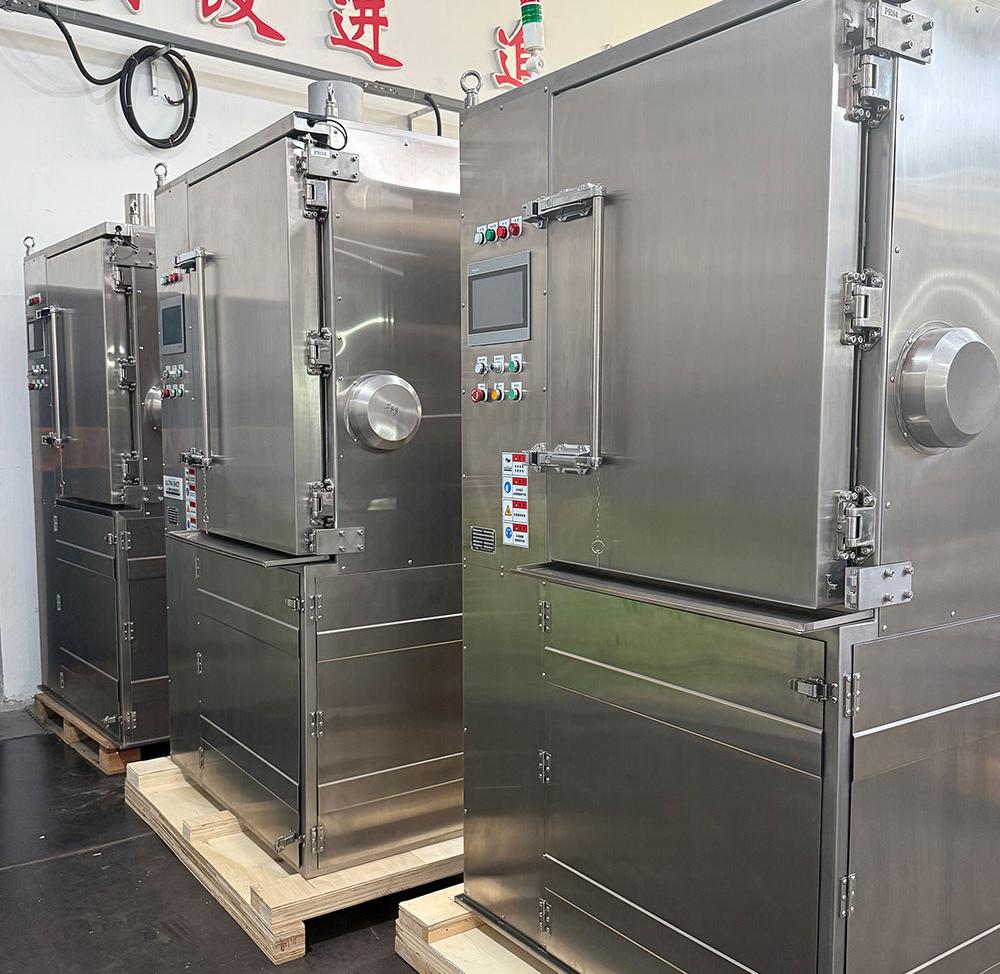In the manufacturing industry, deburring and edge finishing are crucial steps to ensure product quality. Traditional manual or mechanical trimming methods are not only time-consuming but may also lead to product defects due to inconsistent operation. The Cryogenic Deflashing Machine, through innovative low-temperature technology, is revolutionizing this process and becoming a powerful tool for improving production efficiency.
I. The Core Principle of the Cryogenic Deflashing Machine
The core technology of the cryogenic deflashing machine is based on the low-temperature embrittlement effect. Its working process is divided into three steps:
1. Deep Freezing: Place the parts to be processed in a closed environment and inject refrigerants such as liquid nitrogen, causing the surface temperature of the parts to drop rapidly to between -50°C and -130°C. At this temperature, the burrs of plastic, rubber, or metal materials become brittle and hard due to the principle of thermal expansion and contraction, while the main body of the parts remains tough due to its dense structure.
2. Mechanical Impact Trimming: Through high-speed vibration, shot blasting, or centrifugal force impact, the embrittled burrs automatically peel off from the base material without the need for manual intervention.
3. Rewarming Treatment: After the parts return to room temperature, they can directly enter the next process, with no risk of chemical pollution or physical damage throughout the process.
II. Four Key Factors for Improving Production Efficiency
Compared with traditional processes, the cryogenic deflashing machine significantly optimizes the production process in the following ways:
1. Fully automated operation, saving more than 90% of labor costs
Traditional manual trimming relies on skilled workers to process each part one by one, which is inefficient and the quality is unstable. The cryogenic deflashing machine can achieve fully automated batch processing, and it can process hundreds of parts simultaneously at a single time without the need for manual supervision. For example, after an automotive parts manufacturer adopted this technology, the labor demand in the trimming process was reduced from 10 people to 1 person, and the daily production capacity increased by 300%.
2. The processing speed is increased by 5-10 times
Liquid nitrogen freezing can complete the material embrittlement in only 3-5 minutes, while traditional chemical soaking or thermal cutting takes more than 30 minutes. Taking rubber seals as an example, the cryogenic deflashing machine can process 2,000 pieces per hour, far exceeding the 400 pieces processed by the traditional process.
3. Reduce subsequent processes and shorten the production cycle
The surface of the parts after cryogenic trimming is smooth, and there is no need for secondary grinding or cleaning. An electronic connector manufacturer reported that after adopting this technology, the product yield rate increased from 82% to 98%, and the polishing process that originally accounted for 30% of the production line time was eliminated.
4. Reduce material loss and energy costs
Precise low-temperature embrittlement avoids damage to the base material caused by excessive cutting, and the scrap rate can be controlled within 0.5%. At the same time, liquid nitrogen can be recycled, and the energy consumption is only 1/3 of that of traditional mechanical trimming.
III. Industry Application Examples
Automobile Manufacturing: The processing time for metal burrs of transmission gears is reduced from 8 hours to 40 minutes.
Medical Devices: The trimming accuracy of silicone catheters reaches ±0.01mm, meeting the requirements of a sterile surface.
Consumer Electronics: The daily production capacity of rubber rings for headphones is increased from 50,000 pieces to 500,000 pieces.
IV. Why is Cryogenic Trimming Technology Becoming a Trend?
According to the “Global Industrial Finishing Report” forecast, the market size of cryogenic deflashing machines will exceed $3.2 billion in 2025. Its driving forces come from:
- The balance between precision and efficiency: It is especially suitable for the refined processing of parts with complex geometric shapes.
- Environmental protection and compliance: Zero wastewater discharge and no use of chemical agents, in line with standards such as the EU RoHS.
- Adaptability to flexible production: Different materials of products can be processed quickly by adjusting parameters.
Conclusion
The cryogenic deflashing machine is not just a simple equipment upgrade but a reconstruction of the production logic through physical principles. For enterprises that pursue cost reduction, efficiency improvement, and green manufacturing, this technology has changed from an “optional solution” to an “inevitable choice.” In the increasingly competitive global market, enterprises that take the lead in adopting innovative technologies will undoubtedly gain the initiative to define industry standards.
Post time: Apr-18-2025



